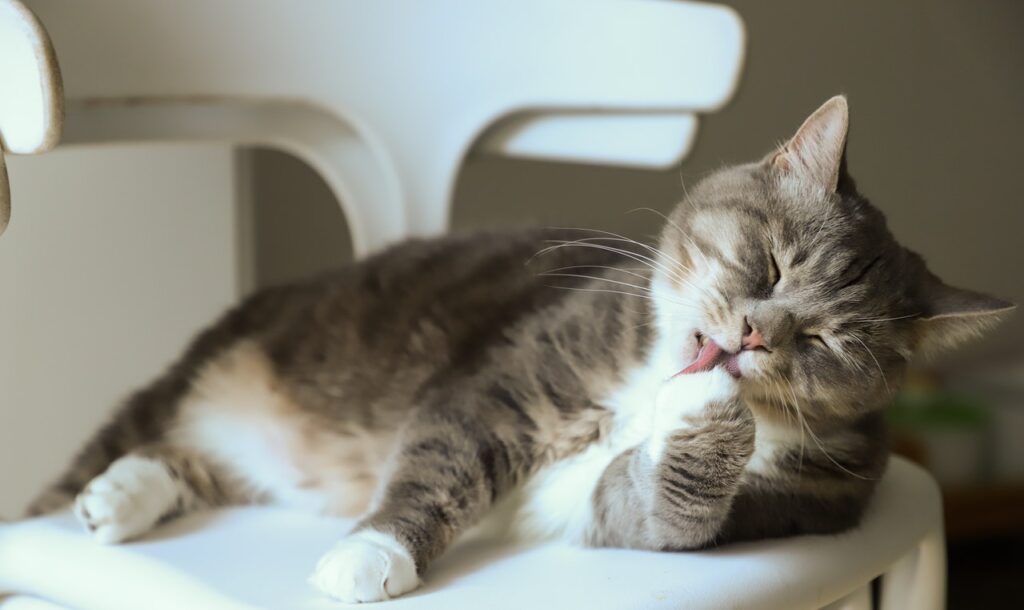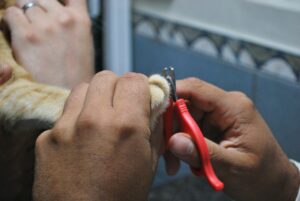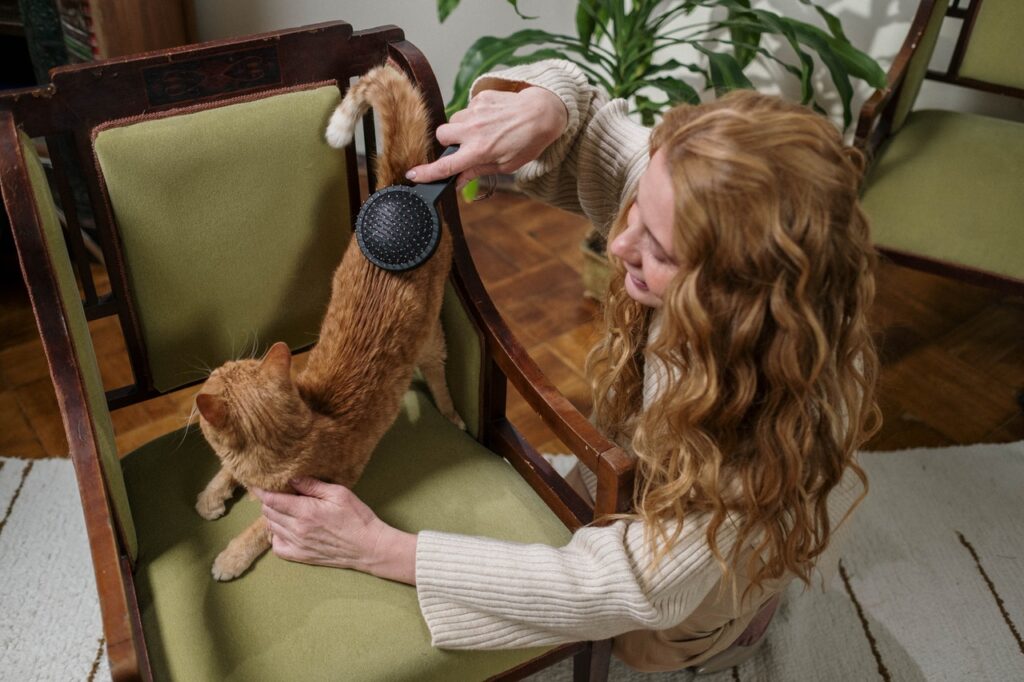Cats like to keep themselves clean. You can often find a cat licking at her fur. So, is cat grooming necessary?
Yes, a cat makes a significant effort to keep herself clean. Sometimes her effort isn’t enough and a helping hand is necessary.
For instance, taking care of overgrown nails and smelly fur are some reasons to consider grooming your cat.
What Happens If You Don’t Groom Your Cat?
If you don’t groom the cat, she may develop painful tangles of the fur. And when you brush the hair, the fur jerks off from the skin and leave behind painful wounds.
Another problem she is likely to face is the ingesting of fur that results in hairballs coming out with the feces or as vomit.
Is It Cruel to Groom a Cat?
Grooming a cat entails nail clipping, bathing, brushing, and shaving. Cat grooming isn’t cruel if you have the expertise. A cat’s skin is extremely thin and if you aren’t a professional you might easily cut the cat. Besides, the feline friends have high tempers. So delicate grooming procedures require a professional.
Do Cats Actually Get Clean from Grooming?

Cats do spend a substantial amount of time grooming (some spend even half of the day licking themselves). The outstanding reason for grooming is to keep herself clean.
Nevertheless, sometimes it signifies more than cleaning. A stressed cat often resorts to grooming herself as a way of calming herself. Therefore, if your feline friend spends endless time licking at herself, it doesn’t mean she hasn’t perfected her cleanliness; perhaps, she is stressed up.
How Often Should I Get My Cat Groomed?
The frequency of grooming a cat depends on her environment, genetics, and nutrition. Further, during the shedding season, the cats grooming frequency should be higher than other times.
Cats with long hair require daily grooming while those with short fur may need only weekly grooming. However, after about five weeks, the pet should get groomed by a professional.
Cat Grooming Entails the Following:
Nail Trimming
 Without care, the pet develops overgrown nails. Thus at least monthly, nail trimming is necessary.
Without care, the pet develops overgrown nails. Thus at least monthly, nail trimming is necessary.
Overgrown nails hinder the smooth walking by the pet. Sometimes the long nails get stuck in carpet or furniture. As a result, it induces pain and thus puts the pet at risk of developing arthritis.
You can make the exercise more fruitful by ensuring the following;
Don’t rush or try to clip all the nails at a sitting. Take time and develop a bond with the pet and touch her toes. Also, let it get used to the sound of the clipper before beginning the actual clipping of nails.
Choose a quiet and comfortable room without distractions. Ideally, it’s best when the animal has had a hearty meal. Take caution and trim only the white part of the nail once or twice a month. The pink part of the nails has nerves and will bleed if you trim it.
In case the cat gets nervous, don’t force her. If after several attempts she persistently refuses, let a professional cat groomer take over the task.
Brushing
Brushing helps remove dead hair, debris, dirt and minimizes hairballs in her digestive tract. Further, as you brush over the hair, you bond more with the cat.
For the short-haired cat, brushing twice per week is enough. However, the long hair species require more frequent brushing.
It’s vita that you use the correct tool for brushing and hence it’s wise to consult your vet. Depending on the species of your cat, you may use a fine-toothed comb, grooming mitts, or bristle brush.
Here are more tips on how to go about the task:

Don’t try to remove an entangled fur by force; it’s painful and you risk leaving wounds on the cat’s thin skin.
Before brushing, take note of her skin status; healthy skin should not have bald patches, flea, ticks, free from tangles and wounds.
Brush following the direction of the lie of the fur (how the cot grows). In case there is tangled fur use talcum powder and manually disentangle the knots.
If you don’t groom the cat regularly, the hair may interweave, and eventually, you’ll spot hairballs in her feces.
Bathing
A cat normally cleans her fur, but sometimes it doesn’t produce satisfactory work. For example, after soiling herself with a dog’s excrete or her prey, you have to her take bath.
When the pet has a skin condition that requires treatment, it becomes a necessity to bathe her. Cleaning removes unwanted substances or smells from her fur.
Generally, cats do not like water. But, you can make the process more enjoyable for the pet by using lukewarm water. Also time the bathing to come after a period of play.
For safety reasons, wear protection over your hands and place a rubber mat on the tub; it prevents the cat from slipping.
You can consider using a handheld spray, provided you don’t let water stray into the cat’s eyes. Use a shampoo that’s meant for a cat’s fur and skin.
However, you have to rinse off the shampoo thoroughly. Or else, it will irritate the cat and attract more dirt. After a bath, comb the fur with a wide-toothed comb and wrap the animal in a warm towel.
End the session by giving the animal one of his favorite treats.
Shaving
The breeds of cats with long fur benefit from hair trimming. Shaving or trimming makes them more comfortable and cools off of the body.
Further, it also reduces the chances of the fur developing matting. But a cat’s skin is thin, so only a professional should handle the task.
Conclusion
Cats spend time in daily grooming. However, you need to boost their effort to produce a complete grooming. But you shouldn’t go about the process blindly. The post thus gives you the vital tips that you need to know.
